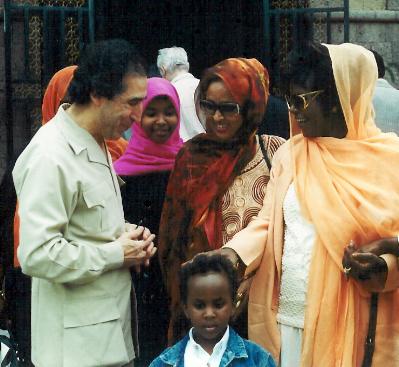Introduction and UNESCO's Mandate
Page 1
Yamousoukro and Seville Statement
Page 2
Origins and Executive Board Adoption
Pages 3 - 4
Launching the Programme: El Salvador and Roundtable
Pages 5 - 6 - 7
1993 General Conference
Page 8
National Projects
Pages 9 - 10
Programme Unit
Page 11
Toward a Global Scope
Pages 12 - 13
Transdisciplinary Project and Human Right to Peace
Pages 14 - 15 - 16
1997: A New Approach
Page 17
UN General Assembly Resolutions
Page 18
Resolution for International Year
Page 19
Declaration and Programme of Action
Pages 20 - 21
Resolution for International Decade
Pages 22 - 23
Training Programmes
Page 24
Global Movement
Pages 25 - 26
Publicity Campaign
Pages 27 - 28
Decentralized Network
Pages 29 - 30
Manifesto 2000
Page 31
Use of Internet
Pages 32 - 33
Future of the Culture of Peace
Pages 34 - 35 - 36 - 37 - 38
I had requested funds in our original budget for a round table of eminent experts, and by July the meeting took shape. It was supposed to raise the profile of a culture of peace by engaging famous and influential participants, and I especially saw it as an opportunity to engage the United Nations in New York.
Although the original idea of establishing a new UN institution for a culture of peace had not supported by the Executive Board in 1992, and the Director-General did not raise the question again, I hoped that culture of peace projects could be included in UN-brokered peace accords. This could help guarantee political agreement and international financing. Unfortunately, the issue was not specifically raised in the letters of 13 February and 28 May that I drafted from the Director-General to the UN Secretary-General or in the latter's response of 30 March 1993. However, I tried to put this on the agenda of the Round Table of Eminent Experts that was convened in July 1993. In this regard, we needed high-level representation of the Secretary-General at the Round Table, and I was initially delighted to learn that it would be Alvaro de Soto who had been central to the El Salvador peace accords. Also, it was important to obtain support from the United States for a culture of peace and to this end I traveled to Washington at my personal expense to meet with Edmund Muskie, former Secretary of State and candidate for President of the US. He agreed to come if invited to take part in the Round Table.
Unfortunately, the Round Table was a disaster! Because of conflicts with the Social Science Sector, a visa could not be obtained to fix the meeting agenda, and, as a result, on 2 July, less than a week before the event, Senator Muskie sent word that he would not come to a meeting that could not even provide him with an agenda. Perez de Cuellar had fallen ill. Graca Machel lost her son to an automobile accident and could not come. Alvaro de Soto came, but when the Director-General failed to remain after giving his opening remarks, Mr. de Soto felt slighted and left early. I had a brief chance to speak with him and found that he was bitter about his experience with the Salvador peace accords that he had been responsible for. The US and European donors had failed to make good on their promise to pay for land reform and judicial reform which were key points of the peace accords. "Why?" he asked pointedly, "should we expect they will pay for a culture of peace?"
One bright point was the participation of the veteran diplomat Mohamed Sahnoun, who continued to promote the culture of peace in the years to follow, as advisor to Director-General Mayor and later to Secretary-General Kofi Annan.

 |
 |
 |